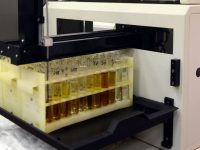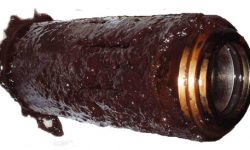Introduction to FTIR Spectroscopy
Fourier Transform Infrared (FTIR) spectroscopy measures additive depletion, contaminant buildup and base stock degradation in lubricants. This type of analysis complements wear metal and other analyses.
The principle of the test is that an infrared absorbance spectrum is acquired by passing an infrared beam through a thin layer of static sample. The level of certain additive, contaminant, and degradation by-products can be determined by measuring the absorbance at key wavelengths. The results are typically reported as absorbance per centimeter (abs/cm), referring to how much of the infrared beam is absorbed at a specific wavelength, though often the values are treated as unitless or indexed values.
For routine testing, four parameters are reported: oxidation, nitration, antiwear and other fluid.
Antiwear measures degradation of the ZDDP additive. Since this additive is not used in all oil types, measured values must be compared to new oil reference values for the same fluid, or at least trended, as low results may be expected.
Other Fluid indicates contamination with other products when this value increases from a new oil reference value.
For specific information on other measured parameters, bookmark this page for future updates. Coming up next: Oxidation by FTIR.





